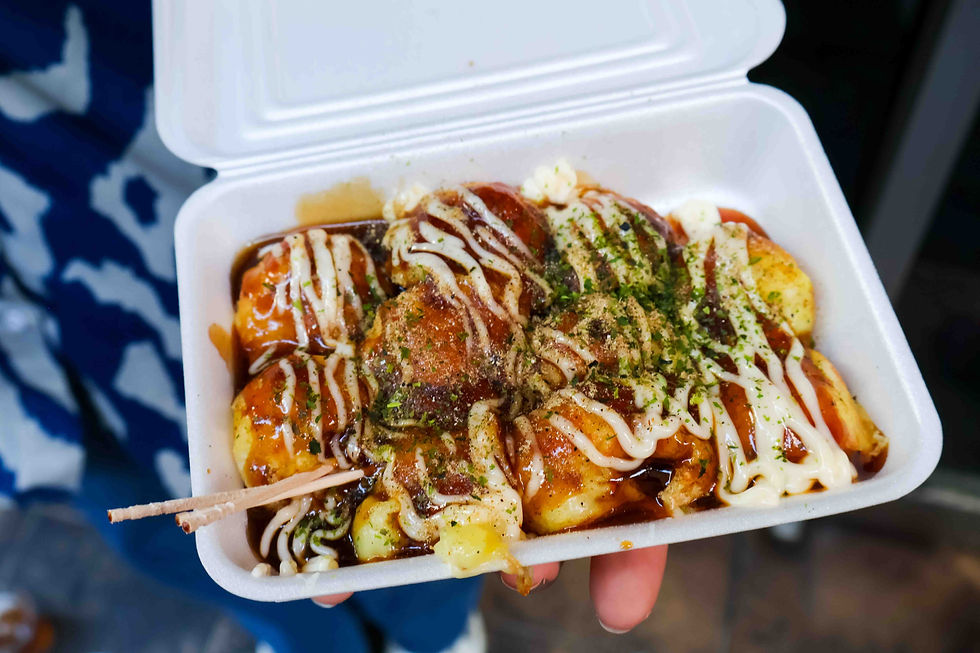Bread With a Japanese Twist in Kyoto
Lewis Miesen
•
Sep 16, 2025
•
5
min read
Japan isn’t a country most people immediately associate with bread, yet over time it has created some of the most fascinating and beloved baked delights, blending local tastes with Western influence.

Today, bakeries can be found in every corner of Japan. Some specialize in uniquely Japanese-style breads, while others lean toward international traditions, from elegant French boulangeries to cozy American-style donut shops.

Bread, or pan (パン), once considered a foreign food, has now been fully embraced and made at home in Japanese culture. One striking example of this is Japanese bread in Kyoto: despite being the historic heart of temples, tea, and traditional culture, the city also boasts the highest number of bakeries per capita in all of Japan.
A Brief History of Pan (パン)
Bread’s journey into Japan is centuries old. It was first introduced by Portuguese traders in the mid-16th century, called pão at the time, a word that evolved into the Japanese pan (パン).
Yet it did not become a regular part of Japanese diets until much later. During the Meiji era (late 19th century), when Japan rapidly modernized and looked westward, bread slowly gained popularity, particularly in urban centers.

Its true breakthrough, however, came after World War II. Food shortages in the late 1940s led to massive imports of wheat flour from the United States as part of food aid programs, along with other surplus items such as powdered milk and canned goods. Cheap, filling, and easy to mass-produce, bread transformed from a foreign curiosity into an everyday staple that helped carry Japan through the difficult postwar years.
From Survival to Sophistication
By the 1960s and 70s, Japanese bakers traveled abroad, especially to France and Germany, to master European baking techniques. They brought back croissants, baguettes, and refined patisserie that quickly found eager customers at home.

At the same time, Japan was developing its own style of bread: lighter, softer, and tailored to local tastes. Sweet bean paste, matcha, custard, and seasonal fruits found their way into doughs, while plain white bread, or shokupan (食パン), became a symbol of simplicity and comfort. This blend of European craftsmanship and Japanese refinement gave rise to a unique variety and elegance that makes Japanese bread so delicious today.
How to Navigate Japanese Bakeries
When you step into a Japanese bakery, you’ll usually find a stack of trays and a row of tongs near the entrance. Pick up a pair of these, then wander through the displays, using the tongs to grab any breads that catch your eye. Place your selections on the tray, and when you’re ready, bring it to the cashier, who will total everything for you.

Most bakeries in Japan work on a grab-and-go model, so there is often no seating. The best way to enjoy your purchases is to take them outside, perhaps to a quiet park bench, under the cherry blossoms in spring, or by a riverbank on a nice afternoon.
From Sweet to Savory: Exploring Japanese Bread in Kyoto
Japanese bakeries are a wonderland of variety, where rows of trays overflowing with breads ranging from nostalgic childhood treats to creative fusions inspired by global flavors.

Here are some of the most iconic types of Japanese bread:
Sweet Classics
アンパン (Anpan) – A soft roll filled with smooth red bean paste (anko). Invented in the late 19th century by Kimura Yasubei, it remains one of Japan’s most enduring breads. Gentle sweetness and pillowy softness make it timeless.

メロンパン (Melonpan) – A round bun wrapped in a thin crunchy cookie crust that cracks slightly as you bite into it. Despite the name, it rarely contains melon, though some bakeries add a hint of melon flavor.

クリームパン (Cream Pan) – Golden rolls filled with custard cream, beloved for their contrast of airy bread and silky filling. A favorite for schoolchildren.
ジャムパン (Jam Pan) – A simple bun with sweet fruit jam tucked inside. Strawberry and apricot are classics, often wrapped neatly in wax paper for easy eating on the go.
チョココロネ (Choco Corone) – A playful cone-shaped bread filled with chocolate cream.

カスタードパン (Custard Pan) – A richer cousin of cream pan, often baked with custard inside or topped with streusel for extra indulgence.

揚げパン (Age Pan) – Fried bread rolls dusted with sugar or kinako (roasted soybean flour). Crispy, filling, and nostalgic for the older generation.
Savory Favorites
カレーパン (Curry Pan) – Deep-fried bread filled with Japanese curry. Crunchy on the outside, warm, spicy, and aromatic inside.

焼きそばパン (Yakisoba Pan) – A soft bun stuffed with stir-fried noodles and tangy sauce, often finished with a sprinkle of pickled ginger. This “noodles-in-a-bun” combination is quirky, filling, and one of Japan’s most iconic snack foods.
枝豆パン (Edamame Pan) – Soft rolls studded with salted edamame beans, sometimes paired with cheese for extra richness. Nutty, wholesome, and satisfying, it’s a light yet flavorful savory option.
コッペパン (Koppepan) – A plain, elongated roll often served with butter, jam, or peanut cream. Once a standard in school lunches, it’s now enjoying a nostalgic revival in retro bakeries.

食パン (Shokupan) – The iconic Japanese milk bread. Soft, fluffy, and slightly sweet, it’s the foundation for sandwiches, toast, and countless Japanese comfort meals.

明太子パン (Mentaiko Pan) – A savory bread flavored with mentaiko (spicy pollock roe), often baked into the dough or spread on top with butter or mayonnaise before toasting. Salty, spicy, and deeply umami, it pairs perfectly with a cup of tea or even a cold beer.
Some Modern Fusions
米粉パン (Komeko Pan) – Made with rice flour instead of wheat, this bread has a chewy, springy texture and a subtle sweetness. Popular as a gluten-free option, it’s also celebrated for highlighting Japan’s long heritage of rice cultivation.

アボカドチーズパン (Avocado Cheese Pan) – A modern creation blending creamy avocado and melted cheese. Rich and satisfying, it’s a perfect example of Japan’s openness to global trends.
キムチパン (Kimchi Pan) – A bold fusion bread, often stuffed or topped with spicy kimchi. Soft dough tempers the heat, making for a punchy snack that experiments with Korean flavors.
Japan: A Bakery Wonderland
Together, these breads showcase the boundless creativity that thrives inside a Japanese bakery. Whether you’re biting into the traditional sweetness of anpan, savoring the warm spice of a curry pan, or marveling at the chewy texture of komeko pan, each loaf and roll tells part of Japan’s story. More than just bread, it is a window into the nation’s culture of reinvention, where tradition and innovation rise together, warm, fragrant, and fresh from the oven.

Bread may have begun as a foreign curiosity, but in Japan it has been reimagined with care, creativity, and cultural flair. From humble corner shops to stylish boulangeries, bakeries here prove that bread is no longer an outsider, it’s an everyday joy woven into Japanese life.






